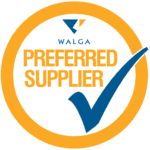From making it easier to merge onto the freeway to making way for emergency vehicles, the idea behind Smart Freeways is to make getting from A to B smoother for everyone on our roads.
As Perth’s leading safety signage specialist, Corsign was proudly involved in developing our city’s first Smart Freeway project and has already installed the project signs for the second major Smart Freeway – the Mitchell Freeway Southbound.
If the upgrade is anything like the first Smart Freeway, then there are many reasons for the 50,000 drivers who use the road each and every day to celebrate.
What We Have Learnt From Perth’s First Smart Freeway
By any measure, it’s fair to say that the first Smart Freeway has been a great success. The instalment of the smart technology on Kwinana Freeway Northbound – between Roe Highway and the Narrows Bridge – appears to have been very effective.
Notably, the Kwinana Freeway upgrade has had to work within significant constraints. With the Swan River on one side and the railway line on the other, there was little or no room to add another lane to the Freeway between Canning Highway and the Narrows Bridge. Inspired by other successful examples around Australia, the emergency lane was instead converted to an additional traffic lane. Six emergency stopping bays around 630 metres apart were then created to facilitate in the event of a breakdown.
In losing the emergency lane, it was essential for the Road Network Operations Centre to have the tools it needed to operate lane closures in the event of an incident. Using a combination of road sensors, radars and CCTV, the smart technology alerts the operators as soon as someone enters a bay or stops in a traffic lane.
The result is Smart Freeway technology. Not only is it effective, it’s approximately half as expensive as adding in extra lanes and building them from scratch.
Wins for the project include reduced congestion and increased road safety. The developments also enhance existing infrastructure which reduces the average journey time for drivers by 10 minutes. That’s a huge improvement for Perth drivers and makes it easy to see why the new Mitchell Freeway Southbound upgrade is being met with such enthusiasm.
So What Exactly Is A Smart Freeway And How Does It Work?
From the existing Smart Freeway project, we can see that drivers benefit from the following:
- Overhead electronic signs to open and close lanes in the event of an accident, or change speed limits to make an improvement to traffic conditions
- Electronic signs also act as message boards to provide additional information to drivers on the conditions ahead
- A popular aspect of Smart Freeways is coordinated ramp signals to improve traffic flow and make merging onto the freeway easier and safer
- Smart Freeways are monitored 24/7, allowing for incident detection systems to spot vehicles that are stopped on the freeway or the emergency stopping bays
- The same technology can enhance incident response times
All top stuff of course, however, it is essential that the Smart Freeway still rely on traditional Corsign road signage for such signs as speed signs and advance direction signs in case of redundancy. Power could be lost at any time and people still need to know where they are going. That’s where Corsign’s expertise as signage expert is invaluable.
Corsign provide custom-made road safety signage to the Main Roads contractor appointed for the construction of the Kwinana Smart Freeway project. Corsign was not only able to provide the signage, but our team was also able to install the road safety signs.
As with all Corsign projects, this project’s signage was manufactured and installed through an efficient process whilst ensuring that site safety protocols were met. For more on what we believe makes safety signage effective – please click here.
Where Will The New Technology Be Rolled Out?
The next ‘Smart Freeway’ is being rolled out from Hester Avenue to Vincent Street, with all 16 entry ramps to be modified with coordinated signals. Smart technologies will be installed from Reid Highway to Vincent Street, including 20 overhead electronic signs which can display speed reductions and let you know when a lane is closed ahead.
Other upgrades along the freeway include:
- Construction of an additional southbound lane from Hodges Drive to Hepburn Avenue.
- Construction of a dedicated lane from the Hepburn Avenue entry ramp to the Warwick Road exit ramp.
- Upgrade and build new shared paths between Ocean Reef Road and Warwick Train Station, connecting to the path adjacent to the freeway.
- Installation of safety barriers, emergency stopping bays, emergency breakdown lanes, and noise walls where required.
What Exactly Will I See?
The upgrade will include the installation of co-ordinated ramp signals. The ramp signals are designed to manage the flow of traffic entering the freeway.
The on-ramp traffic signals work the same way as those on suburban roads and highways, only faster. Sensors in the asphalt constantly measure traffic flow on the freeway and communicate with all of the ramp signals. The smart technology determines how much traffic can enter the freeway by varying the red signal time. As the first car travels through the short green period, the lights turn yellow and then red again. Only one car per green per lane is released to the freeway each time. This helps to keep the freeway moving smoothly.
Hundreds of sensors are embedded in the Smart Freeway. These sensors provide valuable real-time
data that allows operators at the Road Network Operations Centre to react and make changes to keep traffic flowing.
The Road Network Operations Centre is responsible for managing traffic flow across the entire metropolitan region. This purpose-built facility is designed to optimise road network safety, performance and congestion management – keeping Perth motorists safe, and making their journey times shorter and more consistent.
Perth drivers will also notice 20 overhead electronic information signs designed to display speed limits in real time and advise drivers of a lane closure. The electronic signs can be programmed to close lanes, divert traffic into adjoining lanes or temporarily reduce the speed limit in the event of an incident or when an emergency vehicle needs to pass, making it safer to travel on the Smart Freeway.
The Operations Centre is the hub of the Smart Freeway. Operators can manage changing road conditions, dispatch dedicated Incident Response Vehicles 24/7, or use electronic signs to close lanes and divert traffic to help emergency service vehicles get through. Stopped vehicle detection technology will also be rolled out along with the installation of CCTV cameras, lighting, safety barriers and drainage modifications.
The provision of emergency stopping bays will also be available in the event of an incident.
It Sounds Expensive – Is It Definitely Toll Free?
Yes, as with all roads in WA, the upgrades will be toll free. That doesn’t mean that you haven’t paid for it. The $140 million Smart Freeway Mitchell Southbound works are jointly funded by the Federal and Western Australian State governments. That’s your taxpayer dollars!
It’s big business and the contract has been awarded to Intelligent Freeways Alliance to deliver the project. The Intelligent Freeways Alliance comprises of NRW Pty Ltd, Service Stream Maintenance Pty Ltd and WSP Australia Pty Ltd.
How Disruptive Will The Work Be?
A great deal of the work has been done, although drivers can expect intermittent lane closures, freeway closures and detours during night works right the way through to the end of 2023.
In addition, you may notice path upgrades are taking place at the same time. Work is being done to construct retaining walls and noise barriers, as well as the Principal Shared Path (PSP) along Mitchell
Freeway southbound between Ocean Reef Road and Warwick Train Station. Existing sections will get an upgrade to improve access and mobility standards.
In accordance with safety requirements, a series of temporary path detours have been implemented. Temporary signage showing the detour route maps is located at shared path entry points and work locations. Directional signage will also assist cyclists as they navigate the detour sections.
Where Are We Now With The Upgrade?
According to Main Roads WA:
- Clearing works are progressing between Hepburn Avenue and Warwick Road to construct a new traffic lane adjacent to the freeway verge to facilitate safer merging, a new emergency stopping lane and Smart Freeway modifications to the entry ramps.
- Works on the verge will see road users progressively moved to lanes adjacent to the median, with a number of traffic re-alignments to occur in November and December, between Hodges Drive and Reid Highway. This will involve night-time lane closures with some freeway southbound on and off ramp closures with detours.
- Works continue on the third lane adjacent to the median between Hodges Drive and Hepburn Avenue, with completion expected in mid-2023.
Smarter Thinking
We hope you have found our summary of the Smart Freeway useful. At Corsign, as WA’s leading signage manufacturer, we believe the project will significantly improve safety and efficiency on our roads and cut journey times for WA road users. For more information on this project, please go to the Main Roads WA website.




